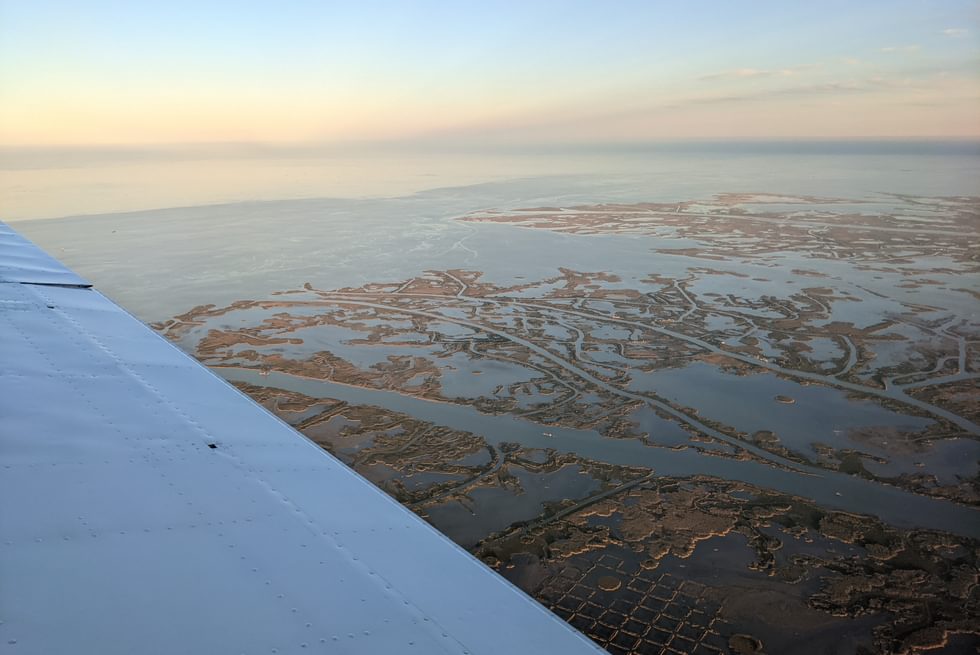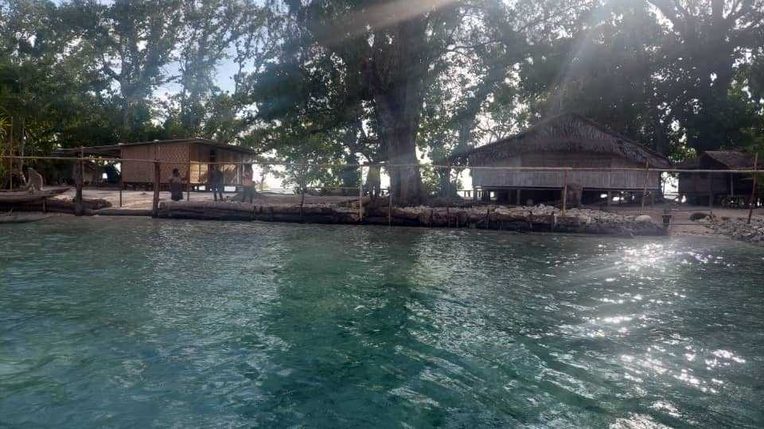Indigenous Coastal Planning in Papua New Guinea: Self-determination through Revitalization
From the Series: Coastal Futures
From the Series: Coastal Futures


There are no external efforts to manage or plan for the dramatic effects of climate change in the coastal zones of Lovongai Island. The island, known as New Hanover in much of the international literature, is part of New Ireland Province, one of the marine provinces within the nation-state of Papua New Guinea. Climate change induced warming trends, thermal expansion, coastal erosion, increased severe storm surges, drought, and food shortages are now part of Lovongai Islanders daily lives. While there is a great deal of international attention to “climate change in the pacific,” while there are various international funding mechanisms focused on climate change adaptation and resilience for Papua New Guinea, and while an international conservation non-governmental organization has worked on the island for over a decade, the only people focused on what international activists, scholars, and planners call “adaptation” and “resilience” for Lovongai Island are from Lovongai Island. Lovongai Islanders do not think with these categories of agentive practice nor do they use this international rhetoric in their discussions about how to live in the face of climate change. We know this because most of the authors of this contribution are from Lovongai Island with one of the authors having worked in New Ireland, and Papua New Guinea, as an anthropologist for many years.
On Lovongai, any and all questions about managing and planning in coastal zones and dramatic environmental change start with local concerns about food security, coral reef health, sea level rise, and coastal erosion. On the islands of New Ireland Province over 75 percent of the population lives adjacent to the sea, and the fish and other marine products living in their reef systems provide the bulk of the protein in their diets and most of their cash income. Besides providing both marine species and humans with a diverse and nutritional source of food, coral reefs and the mangrove systems that they support also increase the structural integrity of coastal areas. Shorelines with healthy mangroves, seagrass beds, and coral reefs are better protected from storm surges, thermal expansion, and coastal erosion; three of the hallmarks of global climate change. Fostering healthy reef systems is a form of resilience practice in the face of climate change.
Historically, the people of New Ireland had an integrated ecological, spiritual, social, educational, and legal system which resulted in a balance between human and non-human life and that resulted in productive and healthy marine and terrestrial systems. Like other sites of colonization, missionization, and the abrupt influx of the money economy, New Ireland suffered a form of disarticulation from this previously integrated system of total social life. With their system’s transformation, New Irelanders began to lose the daily practices that allowed for this system to thrive.
Since 2008, Indigenous leaders working with Ailan Awareness, an Indigenous NGO in New Ireland, have been working with anthropologists to consider what kinds of locally-generated and locally-enacted projects might help to protect reefs, fish, and coastal communities. One of these kinds of projects has been the revitalization of traditional “fish traps” or stone weirs. These are Indigenous planning projects that both increase the number of fish available to people and that protect coastal communities in the face of storm surges, rising sea levels, and extreme weather events. They are also a site where New Irelanders are reintegrating historic ecological, spiritual, social, educational, and legal knowledge and practice.
In Tungak, the Indigenous language on Lovongai, Ngoto are the actual stone weirs created by communities and Pole pole (pronounced poler poler) are the areas inside the weir where fish are trapped. People make the Ngoto by creating a semicircular stone wall in the sea directly adjacent to the shore. The wall cradles the Pole pole, fish swim into the area during high tide, and at low tide there is a pool of water deep enough for fish to survive until the next high tide. In effect, these architecturally engendered areas expand coastal space. On the ocean side of the Ngoto there is a small stone entry way into the Pole pole and as the tide recedes, the fish become trapped inside. Local marine architects build two types of Ngoto, one which traps specific species of fish and another which traps a multi-species collection. These architects work with Indigenous legal experts, ritual experts, and terrestrial engineers on these coastal projects.
Each Ngoto houses a Pole pole and each Pole pole has the potential to be a Vala area. These are spaces that have been agreed upon through Indigenous legal arrangements and ritually enhanced so that there are specific and widely known legal and spiritual rules for their use . Indigenous fisheries experts also use the areas to monitor fish size and life cycle and work with ritual experts to close the area when need-be for ecological reasons. A Vala is a closure, it can be opened periodically and closed again. The Vala was placed for a certain purpose and if enough fish aggregate, the Vala is open for that customary or traditional purpose and maybe opened permanently afterwards or closed again. Historically, each marine Ngoto was connected to a terrestrial Ngoto which could also be subject to the Vala process.
When the communities on Lovongai began working with Ailan Awareness to revitalize this form of coastal engineering, no one had created a Ngoto in over one hundred years. The idea of revitalizing the Ngoto and the social, ecological, legal and ritual practices associated with them came out of conversations between Elders, the director of Ailan Awareness, and an anthropologist. A few Elders remembered Ngoto from their youth, and others, although they could not remember seeing them, remembered their parents discussing them. These communities had all been working with Ailan Awareness on coastal conservation at a time when the NGO was shifting its approach away from western conservation to a more Indigenous and holistic focus on bio-cultural diversity and Indigenous ecological sovereignty. Together, the communities, the staff of Ailan Awareness, and the anthropologist worked to document as much as they could about what people remembered about Ngoto from the past and about other communities regionally who build and built stone weirs. We also combed the anthropological, archaeological, colonial, and mission archives for references to weirs on Lovongai. We then wrote grants for funding to support these communities in their recreation of this integrated resilience system. The anthropological skillset used in this project included archival research and grant writing. We agreed early on that the conversations about historic practices and what Elders remember would be carried out by Indigenous researchers and not outsiders.
After this process, all information collected was shared widely and the process of creating the Ngoto was left in the hands of local experts. Subsequently, ritual and legal experts also consulted with their colleagues from other Indigenous communities in Lovongai and spent years discussing how to breathe life back into the complex social and technical project of Ngoto. They then came together with their communities to enact the Ngoto.
There are currently three Ngoto projects on Lovongai and numerous other communities wish to enact them. The fisheries experts from the communities with Ngoto report increased access to fish biomass, increased diversity in catch, and increased attention to lifecycle and seasonal prohibitions meant to increase stock numbers and sizes. All of these communities also report that Ngoto are slowing coastal erosion and creating space for water to go during storms and king tide events, thereby lessening the effects of climate change related coastal events.
We offer this brief description of Ngoto on Lovongai as an example of coastal engineering that reintegrates rather than disintegrates Indigenous lifeways. This is an invitation for the anthropologists reading our brief essay to think about what existing or possible partnerships they have within the communities they engage that might push back against climate change and generations of disarticulation from their living systems to promote self-determination and socio-ecological sovereignty.